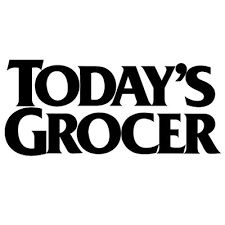
By Keith Daniels
October 1, 2018
The series of tariffs imposed by the Trump administration is turning into a mixed bag for grocery-store chains.
The tariffs are putting grocery stores in a tough spot because some of their vendors are experiencing higher costs as a result of the tariffs and they may be attempting to pass the cost increases on to grocery chains to maintain profitability.
How things pan out depend on a few variables.
Tariffs on steel and aluminum imposed on imports from Canada, Mexico and Europe, for instance, have led to double-digit price increases for CPG products such as soda, soup, canned vegetables and fruits, canned meats and fish and beer.
As shoppers increasingly embrace healthier fare and sour on goods packaged in steel and aluminum, CPG brands in this space are already under revenue and profit pressure. They will likely try to pass the costs onto grocers in the form of price increases. Grocers will have to decide whether to accept the price increases and then whether to pass those costs on to consumers.
But how successful CPG brands are at passing along those costs greatly hinges on the relative strengths of the specific brand and grocery-store chain. The bigger and more important either is will determine if price increases are passed along, but the customers’ price elasticity will be the ultimate determining factor. If the customer is willing to pay for a certain product, then the price increase will be easier to pass along for both the CPG company and the grocery store.
However, grocery stores may have success passing through price increases for items such as canned goods if they are able to get the customer to focus on the total market basket costs as a result of the tariff wars. Other grocery items such as such as beef, pork and dairy, are expected to decrease in price from declining exports as foreign governments retaliate with their own tariffs on these U.S. produced items.
The bottom line? Shifting consumer preferences away from some goods packaged in steel and aluminum toward fresh, frozen and prepare foods, as well increasing preferences for private label. are complicating the ability for CPG companies and grocers to adapt to the increased costs imposed by the new tariffs. Shrinking demand is not an ideal time to raise prices, but grocers may have little choice due to the profit impact from the tariffs. However, when considering their pricing options, grocers need to remain aware of the competitive threat from private label focused grocers such as Trader’s Joe’s and Aldi.
As these trends evolve, it’ll be interesting to see how grocers react in light of these various competing forces. The jockeying among all the players is just starting.
